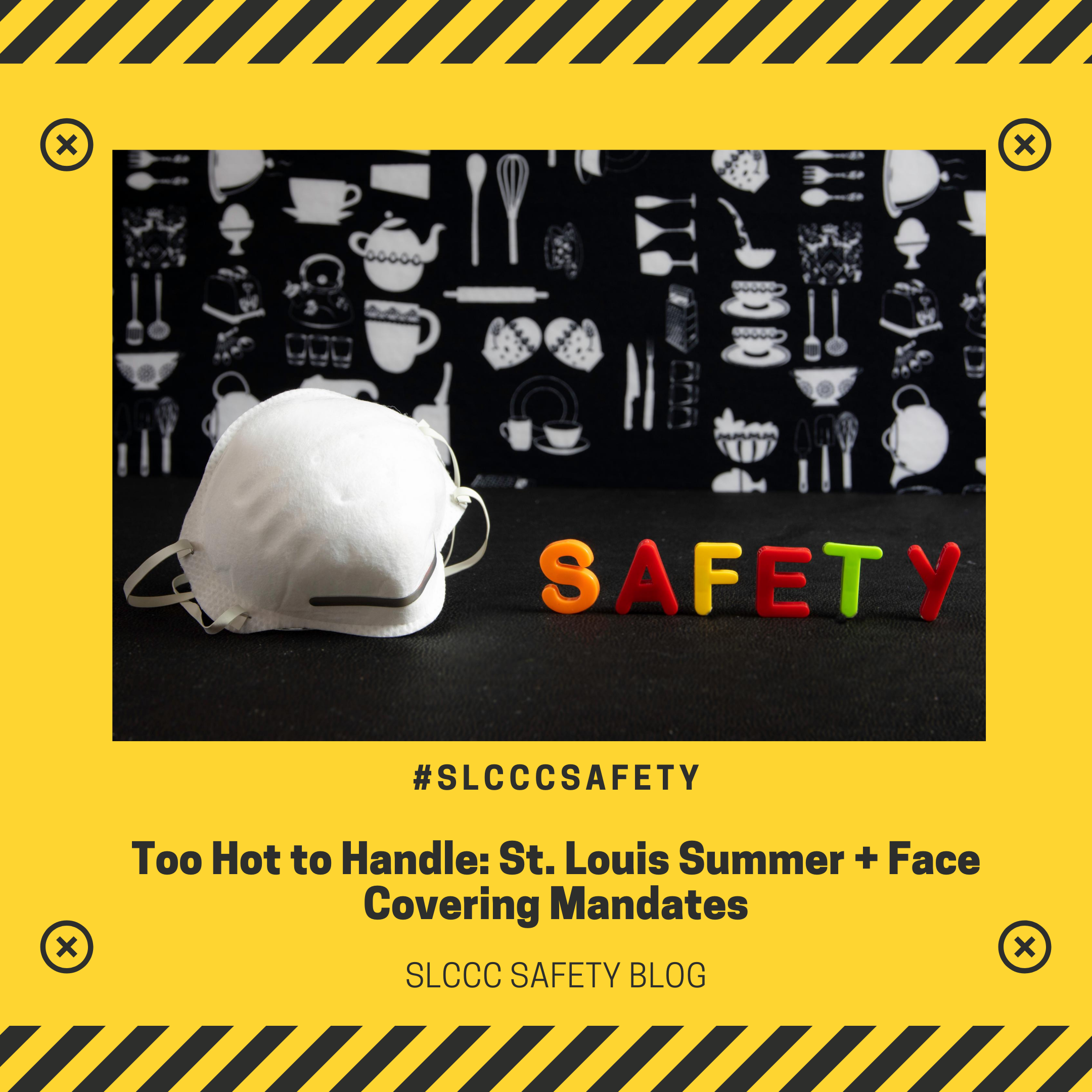 By: Deborah Kempf, Safety Compliance (Kadean)
By: Deborah Kempf, Safety Compliance (Kadean)
Summers in our region get quite heated. The year 2020 really added some fuel to the summer heat as companies and workers strive to meet the challenges of mask mandates imposed by St. Louis County and City.
When choosing a covering to use in the heat, here are some helpful guidelines and reminders:
Comfort – This is top priority. Avoid coverings that are ill fitting to your face or cause irritation from fabric texture. One size does not necessarily fit all so, finding a style with adjustable ear loops or adjustable head ties/bands can help to fine tune a proper fit and ensure the covering doesn’t sag, leave gaps or cling to your face too snuggly.
Material – Make sure the covering you choose makes sense for your task.
Indoors: often we are in closer range of others and the need for verbal communication is necessary. Choose a covering that allows for the basic actions of jaw movement for communication. If your covering shifts and falls out of place as you talk; it will quickly become an annoyance and draw you into continuously touching your face covering.
Outdoors: light weight, light colored moisture wicking material is best if you choose reusable coverings. Again, use sense, if you are going to be working intensely or even working in areas of dust and debris, you should consider using disposable coverings. These can be changed frequently to remain clean and dry and they can immediately be disposed of after use. Coverings become saturated with sweat and dust and other pollutants throughout the course of work, making it not only feel uncomfortable and irritating but also rendering it useless for protection. When you break to hydrate, consider changing your mask, even if it doesn’t necessarily seem soiled. Sweat evaporates from material as it does skin and although the material may feel dry again, it has been soiled by the stress of the sweat.
Caveats: Remember, there are many styles now made of specialty material such as flame retardants. There are now masks/coverings for almost any task you can think of. Always be sure you research and verify claims made by manufacturers about a masks/covering uses and capabilities. Never wet/water down a covering for cooling effects. This renders the cloth useless for protection and breaks down the shape and durability of materials.
Hydration – Staying hydrated is more important now than ever. There is no doubt wearing a covering can leave you feeling parched and dry throated. Keeping extra fluids on hand. Taking frequent water breaks throughout the day can ensure your body is kept hydrated, and ultimately healthy and moving. Again, use the break as an opportunity to change to a clean and dry face covering.
Breathing – Finding it difficult to regulate your breathing while using a face covering? You are not alone. Although face coverings, when used correctly, do not cause a drop in oxidation (the amount of oxygen in your blood) improper breathing while wearing surgical or cloth masks can cause anxiety, headaches, increased heart rate, dizziness, and fatigue. Follow these guidelines for better breathing while wearing your mask/covering.
TAKE LONGER AND SLOWER BREATHS – Notice people around you. Some people change their breathing patterns while wearing a mask. Combat this by taking longer, slower breaths while you are wearing yours.
TAKE MASK BREAKS – If you are wearing a mask for extended periods of time, take breaks from the mask periodically when it is safe. Breaks between times wearing a mask can reduce the negative effects. Use this time to hydrate yourself.
TAKE 5 QUALITY BREATHS – A quality breath is a 4 second inhale through the nose, 6 second exhale through the mouth, and a 2 second pause. Repeat 5 times.
- Take 5 breaths before putting on your mask
- Take 5 breaths immediately after you put on your mask
- Take 5 breaths one last time after removing your mask
This technique sets the right pattern and helps prevent your autonomic nervous system from being locked into a dysfunctional breathing system.
###
Resources:
Information herein was gathered and summarized from solicited information from Christopher Sulmonte, Project Administrator of John Hopkins Bio-Containment Unit and publicly distributed information from Comfort Care Hospice (ComfortCareHospice.com)






